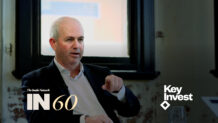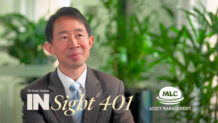Are we still building portfolios for a zero-rate environment?
Headlines remain fixated on the negative impact of higher interest rates, whether that be on property prices, volatility or the cost of living.
While this is clearly challenging for a large cohort of Australia, and many parts of the world, the normalisation of interest rates is a significant positive for those nearing or in retirement.
The key word here is ‘normalisation’, as what we are seeing at the moment is a return of interest rates and monetary policy to what could best be described as normal settings.
The path being taken to get there is highly unusual, to be sure, especially in Australia where the Reserve Bank of Australia has taken the cash guidance rate from zero to one hundred in the blink of an eye (or, to be more accurate, from 0.1 per cent to 4.1 per cent in only 15 months).
But the truth is that we seemed to have become so comfortable with near zero interest rates and the associated ease of access to capital that we forgot interest rates were never meant to be that low.
Investors should be rewarded for putting money in the bank, or have the ability to generate returns from low-risk assets.
From the privileged position of seeing hundreds of client investment portfolios every day, and that of other financial advisory firms, I tend to get the feeling that perhaps we haven’t fully adjusted to the changing circumstances.
Moreso, I believe that many people are still building portfolios for a ‘zero-rate’ environment. What does this mean?
When I refer to investing for a zero-rate environment, I mean investing in the assets that did well when rates were falling or had ultimately hit rock bottom.
Among the most popular and high performing assets in recent years were those that are unlisted such as private equity, venture capital, private credit or direct property. Most of these are not regularly valued, represent higher risk and attract flows due to (among other reasons) the need to seek returns beyond low-risk investments.
I’m not suggesting these assets should be abandoned or not come under consideration, but rather that investors should proceed with caution and remain vigilant to valuation risks.
Extending on this, is the fact that most portfolios continue to rely on risky growth assets, domestic and global equities in particular, for the bulk of their returns, despite increasingly levels of volatility and exceptional short-term performances.
Prudent portfolio construction would suggest taking as little risk as possible in the pursuit of client objectives, which we know vary greatly. Yet from our position as retirement-focused advisers, the ability to generate a significantly higher income, with less volatility via a combination of lower risk fixed income and related investments, is increasingly attractive.
The last such consideration, is that a refocus on strategic asset allocation weightings is warranted. Cash rates close to zero per cent mean that any funds held in cash were a drag on returns for the last few years. Yet having seen term deposit rates now exceed 5 per cent, a case could be made for increasing ‘cash’ weightings from the traditional 2.5 to 5 per cent, towards 10 per cent going forward.
It never hurts to be prepared for the next period of volatility and uncertainty, whenever that may be.











